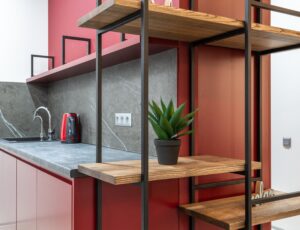Radon can affect residential and commercial buildings. Increasingly, the focus on indoor health and wellbeing has put a spotlight on radon, and the health risks elevated radon levels can come with. Since long-term exposure to elevated radon levels makes it the #1 cause of lung cancer in non-smokers, it is crucial to measure radon levels in your home or workplace.

What is Radon?
Radon is a gas that occurs naturally in the environment. It is radioactive and is formed by the breakdown of uranium in soil, rock and water. With no color, odor, or taste, radon often goes unnoticed. It is found in varying concentrations across the country due to differences in soil composition. There is no area of Canada that is “radon-free”. There are, however, areas of the country where high levels of indoor radon are more likely to be found.
How Does Radon Accumulate?
Radon gas can accumulate in various areas of a home or workplace, particularly in spaces that are in direct contact with the ground, or areas with poor ventilation. Radon is more likely to accumulate in basements and crawl spaces, especially those with dirt floors, since they are in direct contact with the ground. Cracks in floors and walls can provide pathways for radon to travel, eventually finding its way into other areas of the building. In some cases, radon can dissolve into well water. When the well water is used, radon can be released into the air and accumulate indoors.
What Affects the Concentration of Radon?
Factors such as ventilation and differences in air pressures between the inside and the outside of the building can affect the concentration of radon in different areas of a building. In colder climates, when heating indoor spaces, as warm indoor air rises and escapes through upper-level openings such as cracks, gaps, and vents, cold air is drawn in from the lower levels. This can also draw in radon from the ground, increasing its infiltration into the building. As the warm air rises through the building, it carries radon with it, potentially spreading the gas. This means that radon concentrations may vary depending on the floor level and the extent of air movement. This is why it is recommended to test radon levels in multiple locations within the building and to complete the testing during the heating season to get a more accurate assessment of the overall radon exposure.
Test and Measure for Radon
For homes, radon testing kits are readily available and can provide an indication of radon concentrations. If elevated levels are detected contact a radon professional as mitigation measures should be taken to reduce exposure. These may include sealing cracks in floors and walls, improving ventilation, and installing radon mitigation systems.
For larger projects, Premier’s environmental consultants can provide measurement services and identify management strategies. For new construction projects, Premier’s consultants are also trained to inspect readily remediated new construction systems. Reach out to info@premiercorp.ca for more information.






